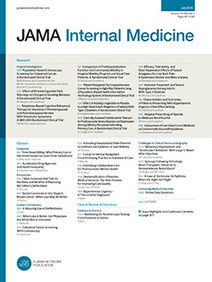 Your new post is loading...
 Your new post is loading...
Despite a recent decline in drug overdose deaths in the U.S., fatalities involving multiple substances—known as polysubstance overdoses—have been on the rise.
There is a lot of talk about substance abuse. The deaths. The crisis. But what comes before all that? What actually drives someone to become addicted to substances in the first place? We throw around the word “addiction” like it’s this dark place people suddenly fall into. But the truth is, addiction doesn’t show up […]
Many clinicians think of addiction as a trauma response. But research supports only a probabilistic connection between the two. Assuming something more than this is misguided.
Why do so many people struggle to stop drinking, quit smoking, or resist endless scrolling on their phones? Addiction touches millions of lives, yet it's often misunderstood as a personal weakness or moral failing. In reality, addiction is rooted in the ancient architecture of the human brain.
Addiction can be devastating. The good news is that there are a number of effective treatments for addiction, including self-help strategies, psychotherapy, medications, and rehabilitation programs. You can use the strategies presented in this report to discover new ways to cope with life’s difficulties.
My health had seriously declined... I remember thinking, 'If I keep going like this, I'm not going to be around much longer.'
Kaiser Permanente researchers find less overall health system use and costs in 6 months after a “brief intervention” in primary care for alcohol use problems
Almost 1 in 10 workers in their 30s uses alcohol, marijuana or hard drugs like cocaine while on the job in the United States, a new study has found.
In this episode, the conversation centers on alcohol and drug addiction. Gain insight into one person's journey to recovery.
Charlie Health reports that alcohol use disorder affects over 29 million Americans, with rising deaths and a significant treatment gap.
If some of what follows isn’t the most pleasant reading you’ll do today, it just may be the most important. If you, a friend or relative are struggling with alcohol or drug abuse, problem gambling, homelessness, depression, anxiety or unemployment, there is help for you today at Community & Family Resources, 500 Fair Meadow Drive, […]
Stay ahead of the curve with this guide to the top 7 teen substance use trends for 2025, from vaping devices to social-media challenges.
Substance abuse has become a serious public health problem worldwide, and finding effective prevention and treatment strategies is undoubtedly an urge…
|
Is it really possible to rewire your brain from addiction? The answer is yes — here’s how your brain heals, and how to support recovery.
An NIH study found that adults with substance use disorder who quit smoking are more likely to achieve recovery.
Finding it hard to concentrate? Are you glued to social media for longer than you’d like? Well, maybe it’s not you… maybe it’s the phones.
Brittany is joined by Magdalene Taylor, writer, cultural critic and senior editor at Playboy, and Fio Geiran, producer at TED Radio Hour and a writer of their Body Electric newsletter, to discuss this phrase: “it’s the phones.” They get into the effects that smartphones have on our brains and our culture, why some people are returning to “dumbphones,” and why it might take more than willpower to manage our relationships with our phones.Click here to check out the Body Electric newsletter.
Stanford Medicine researchers discuss the brain’s ancient wiring and how its built-in reward-seeking system can be hijacked by addiction — as well as ways to prevent and treat it.
(The Center Square) – New data from the Substance Abuse and Mental Health Services Administration shows that while some progress has been made in reducing mental illness and substance abuse, 86.6 million Americans aged 18 and older had either a mental illness or substance use disorder in 2024. SAMHSA’s 2024 National Survey on Drug Use […]
By J. Nadine Gracia, M.D., MSCE, President and CEO, Trust for America’s Health (TFAH), and John A. Rich, M.D., MPH, Director, RUSH BMO Institute for Health Equity, Rush University System for Health, Member, TFAH Board of Directors Substance use, overdose, and suicide send ripples of pain through many communities, often without regard for station in […]
Over the past decade, extraordinary efforts have focused on addressing the US opioid epidemic, which was fueled initially by prescription drugs and now by high-potency synthetic opioids, such as fentanyl. Treatment of opioid use disorder (OUD) with medications—buprenorphine, methadone
Chronic pain is a significant global health problem that affects millions of people globally and in the US which can sometimes lead to unhealthy coping mechanisms such as substance use. This case–control study aimed to examine the relationship between chronic pain and substance use using data from the National Health and Nutrition Examination Study (NHANES). Descriptive analysis and logistic regression models were used to compare the odds of substance use in individuals according to a history of ongoing (≥ 6 weeks) or chronic pain (≥ 3 months). A total of 980 individuals were included in the analysis. Among them, 87.4% reported no substance use, 10.2% single substance use, and 2.3% polysubstance use. Compared with 19.33% of non-substance users, 23.36% of single substance users and 39.21% of polysubstance users reported current ongoing pain (p-value: 0.04). Examining the association between substance use and chronic pain revealed that polysubstance users had a significantly higher risk of having current or a history of ongoing pain or a history of chronic pain compared to non-users, with adjusted odds ratios (aORs) ranging from 2.28 (95% CI 2.27–2.29) to 6.30 (95% CI 6.28–6.32). Single substance users also faced increased risk, with aORs from 1.19 (95% CI 1.18–1.20) to 2.14 (95% CI 2.13–2.15). These results highlight the elevated risk of substance use associated with chronic pain, particularly elevated risk of polysubstance use, after adjustments for demographic, socioeconomic, and mental health factors. These findings emphasize the need for targeted interventions addressing chronic pain to potentially mitigate substance use risks.
PsychiatryOnline.org is the platform for all American Psychiatric Association Publishing journals, DSM, and bestselling textbooks, as well as APA Practice Guidelines, and continuing medical education.
By Deiksha Veerapaneni Imagine being able to not feel pain and instead feel intense relief? That would be pretty addicting, right? For many, that feeling sounds like an escape, a break from suffering. But that powerful sense of relief is exactly what makes opioids so dangerously addictive. These drugs don’t just dull pain, they take […]
Leaders of top nursing organizations advise health systems on ways they can improve well-being and boost their chances at hiring and keeping good nurses.
Addiction alters identity. A therapeutic community that addresses identity and relationships can help people reclaim a lost identity or conjure a new one.
|




 Your new post is loading...
Your new post is loading...



























Most Overdose Deaths Now Involve Multiple Substances | The Pew Charitable Trusts
Overdoses involving more than one drug
Please also review AIHCP's Substance Abuse Counseling Training